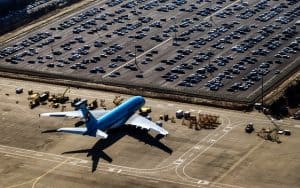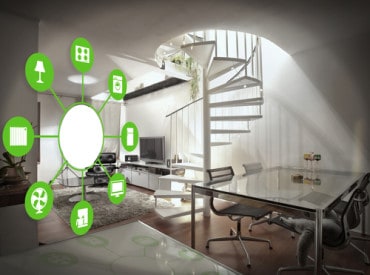
A pilot program combines an intelligent infrastructure, a digital parking garage operations platform, and autonomous vehicles into an automated valet parking service.
One of the worst things about travel is airport parking. You need to build in lots of extra time to find a spot. And then there is the joy of dragging your luggage to the gate. Thanks to the expansive layout of modern airports, that usually means you’ve either got a long walk, must catch a shuttle bus, or both.
There may be an alternative on the horizon. Apcoa Parking, Bosch, and Mercedes-Benz are working to provide the world’s first commercial automated valet parking (AVP) service. The three companies aim to introduce driverless and fully automated parking at Stuttgart airport in the future.
See also: A New Wrinkle in Autonomous (and Manned) Vehicles
The goal is to make the AVP system co-developed by Bosch and Mercedes-Benz ready for commercial operation. The new Mercedes-Benz S-Class already can accommodate it. The auto is the world’s first production vehicle to feature the technology required for future infrastructure-based AVP. As an option, customers can buy the appropriate pre-installation for what the company calls the Intelligent Park Pilot.
The effort is a perfect example of the synergies that can be derived when combining smart systems. In this case, elements of an intelligent infrastructure, a digital parking garage operations platform, and an autonomous vehicle are merged into an app with a broader purpose than the individual elements used separately.
The technology makes the S-Class capable of receiving a smartphone command to drive itself to a reserved parking space. “With the new S-Class, it’s not just driving that’s a luxury, but parking as well,” says Dr. Michael Hafner, head of automated driving at Mercedes-Benz AG.
The P6 parking garage at Stuttgart airport will serve as the pilot for the planned commercial automated parking service. There, the companies will test how the vehicle technology onboard the S-Class interacts with the intelligent Bosch infrastructure and APCOA FLOW, the digital platform provided by parking garage operator Apcoa.
The work builds on past efforts by the three companies. For example, one step needed was to have an auto that met the Society of Automotive Engineering (SAE) Level 4 automation. Level 4 is defined as highly automated, meaning the vehicle can perform all driving functions under certain conditions. In July 2019, Bosch and Mercedes-Benz received the world’s first special permit to operate AVP for selected E-Class vehicles without a safety driver in real-life, mixed parking garage traffic at the Mercedes-Benz Museum in Stuttgart.
The new Mercedes-Benz S-Class is now the first production vehicle to feature AVP technology, enabling it to park without a driver. However, this is conditional on the future availability of parking garages with the appropriate infrastructure and national legislators giving AVP the green light. This makes the Mercedes-Benz S-Class the world’s first vehicle to feature a pre-installation for an SAE Level 4 automated driving function, the second-highest automation level.
How it works
The pilot parking garage at Stuttgart airport will use Bosch video cameras to identify vacant parking spaces, monitor the driving aisle and its surroundings, and detect obstacles or people in the aisle. Until now, lidar sensors have been used for this purpose. A dedicated control center in the parking garage then calculates the route the vehicles need to take to reach an available space.
Information from the cameras makes it possible for cars to drive themselves around the parking garage – even on narrow ramps, enabling them to move between different stories. The in-vehicle technology autonomously converts the information from the infrastructure into driving maneuvers. If the cameras detect an unexpected obstacle, for example, the vehicle safely performs an emergency stop.
To park, drivers pull into a drop-off and pick-up area directly behind the P6 parking garage entrance, giving AVP users a convenient place to leave their vehicles. As they make their way to the terminal and check-in, their S-Class will park itself in the basement, guided by information from the infrastructure technology. Finally, the Apcoa platform makes the entire parking process ticketless, cashless, and fully automatic.





